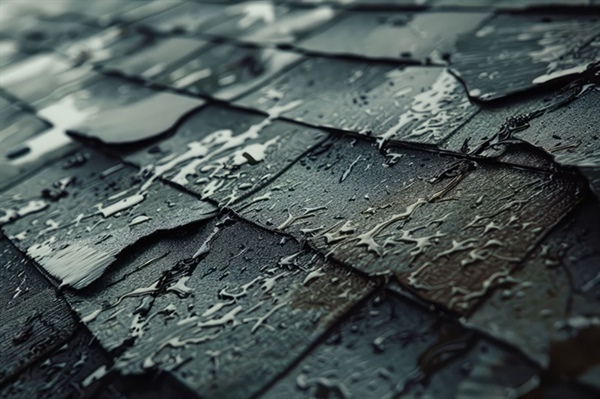How to Document Wind Damage for Insurance Claims in the Twin Cities

Wind damage is one of the most common forms of property damage in the Twin Cities, and when it occurs, it is crucial to know how to document the damage for insurance claims.
Whether it's torn shingles, broken windows, or uprooted trees, filing an insurance claim requires clear, detailed evidence to support your case. Failing to document wind damage properly can result in claim denials or delays, which is why understanding the process is so important.
In this article, our team of experts walks you through how to effectively document wind damage for insurance claims in the Twin Cities. Let's dive in!
Essential Details to Include in Wind Damage Documentation
When documenting wind damage for an insurance claim, certain key details must be included to ensure a comprehensive and accurate report. First and foremost, you should record the date and time of the damage.
If the damage occurred during a known weather event, such as a storm or windstorm, reference the storm's name or local weather reports that substantiate the conditions.
Next, a detailed inventory of the damage must be made. This includes describing affected areas of your property, such as:
- Roofs
- Windows
- Siding
- Outdoor structures
You should also record personal property damage, such as fallen trees or broken fencing.
Be sure to include the property's condition before the damage occurred, referencing any previous maintenance or repairs to demonstrate that the damage was solely due to the wind event.
Lastly, keeping copies of estimates from contractors or restoration professionals can add credibility to your claim.
You can reference services provided by storm damage experts in the Twin Cities who are experienced in assessing and documenting storm-related losses.
How to Photograph Wind Damage for Insurance Claims
Properly photographing wind damage is crucial when filing an insurance claim. To provide context, begin by taking wide-angle photos of the entire property, followed by close-up shots of the specific damage.
It’s important to capture the damage from multiple angles, ensuring you have clear, high-resolution images that leave no room for ambiguity.
When photographing structural damage, such as roof shingles, siding, or windows, take pictures of the damaged and undamaged sections to compare. Include any debris, fallen trees, or scattered materials caused by the wind, and ensure that you have photos of interior damage if applicable.
Remember to document any damage to personal property, like vehicles or outdoor furniture. Timestamped photos are more valuable, as they provide clear proof of when the damage occurred.
Common Mistakes Homeowners Make When Filing Wind Damage Claims
Filing an insurance claim after wind damage can be daunting, and many homeowners make avoidable mistakes that lead to claim denials or delays. One of the most common errors is failing to document the damage properly.
Incomplete or unclear evidence, such as poor-quality photographs or missing receipts, can result in insufficient proof for the insurance adjuster.
Another common mistake is waiting too long to file a claim. Homeowners often delay reporting the damage, hoping it can be fixed independently or assuming the insurance process is too time-consuming.
This delay can result in missed deadlines, which vary depending on the insurance policy and local regulations. Prompt action is critical in ensuring the claim is processed efficiently.
Lastly, not seeking professional advice or assistance can lead to mistakes. Many homeowners attempt to handle the process alone without consulting insurance experts or restoration professionals, which can result in underestimating the cost of repairs or overlooking important details in the claim.
How Long Do You Have to File a Claim After Wind Damage?
The timeframe for filing a wind damage claim can vary depending on your insurance policy and state regulations. In the Twin Cities, most insurance companies allow homeowners to file a claim within a specific period, typically ranging from 30 to 60 days after the damage occurs.
However, it’s important to check your policy for exact deadlines, as missing this window can result in your claim being denied.
Filing your claim promptly is essential because if left unaddressed, wind damage can worsen over time.
Issues like roof leaks or structural damage can lead to more expensive repairs if not handled quickly. If too much time has passed, insurance companies may also question the extent of the damage, making it harder to prove that the damage was a direct result of the wind event.
To avoid delays, homeowners should initiate the claims process as soon as possible after the wind event. Start by contacting your insurance company to understand their specific requirements and timelines and gather all necessary documentation to support your claim.
How Acreage Restoration Can Assist with Wind Damage Claims
Navigating the process of documenting wind damage for insurance claims can be overwhelming. However, the team at Acreage Restoration is well-equipped to provide professional guidance.
From assessing damage to offering support with exterior services like roofing, siding, and windows, our experts have extensive experience helping homeowners recover from storm-related events in the Twin Cities.
With a focus on detailed documentation, we ensure that your insurance claim is backed by the necessary evidence, increasing your chances of approval.
Whether you need help with storm damage restoration or with understanding the insurance process, Acreage Restoration is here to help.
For more information, feel free to contact us at 612-401-5911. Our dedicated team is ready to provide the support you need to restore your home and manage your insurance claim efficiently.